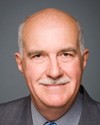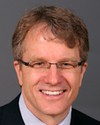I'll try to be efficient with my comments, but I would be remiss if I didn't begin by saying thank you to this committee for the privilege of coming to Ottawa from Manitoba to address my government.
You have had just a brief moment to see an untranslated picture of my family, and you would have seen that four of our children are Ethiopian, first-generation Canadians, and they're very proud of this country and the privilege that I have today to serve in some small way.
The reason I'm here today--and that brings me to my second thank you--is that Shelly Glover was in our offices a few weeks ago to present to Momentum Healthware a certificate recognizing Momentum Healthware as an innovation leader in Canada. That certificate also came with the recognition that you, our government, have invested in Momentum Healthware over the last number of years. Most recently you have spent $111,000 of National Research Council money to invest in the development of a mental health module for Momentum Healthware's health IT solution. That was recognized at a press conference. I want to thank you for that investment in our research and development and I want to give you at least some feedback on the effectiveness of that investment. We are now already moving into the pilot stage in Manitoba with our community mental health module. We've had expressions of interest from a number of other provinces, as well as New Zealand, for possible deployment of that module as well. So I think it speaks for itself that the National Research Council has invested well.
Canada is a country that has many jurisdictions in it. I recognize, as a health IT executive, that my job is in fact a very, very simple job compared to the role that you have and that the executives who sat in these chairs before me have, in terms of forming policy and respecting the incredibly complementary but sometimes conflicting values that come from the different jurisdictions we are made up of. As an IT solution provider, I have often found in my experience in the health IT sector that as I come into different sectors of health care--Momentum Healthware's solutions span long-term care, home care, community care, community mental health, palliative care--in each of these sectors of care and each of these forums of care, the health care providers use a different language to describe their activities. They use different processes to provide care to their clients. One of the things that we've done with the software solutions is we've really focused on trying to abstract that or reduce that down to what things are common across the different health care sectors, and create a solution that is highly translatable. It's translatable among sectors of health care and it's also translatable among different languages in order to be able to provide a single repository for health information to the multiple health care providers.
As a citizen of Canada, it's something I'm very conscious of. At the same time, I'm also a citizen of Manitoba. In my early years as a child growing up, I was educated on the God's River First Nation, so I also have both an allegiance and interest in the first nations communities of Canada. Each of those communities will treat me as a stakeholder to some extent. The work that you're doing with Corrections Canada also deals with, again, those same citizens. For them, you also represent an important stakeholder in their health care.
What we try to do with the software solutions that we've developed--and I want to really treat this as general information available to you--is really highlight the fact that information technology is a determinant of health care. There are so many different things that you have the opportunity to review as determinants of health care, and I would submit to you that this information is perhaps one of the greatest determinants of health care.
If you were to ask health care providers in any sector of care whether they would appreciate or benefit from or whether the care of their clients would benefit from the knowledge of the other health care providers in the continuum of care, whether they are federal or provincial or whether they work for an aboriginal healing centre or within a correctional facility or a parole centre, every health care provider would understand that the care they provide would be better, more informed, and more effective if they were able to have access to the information that was provided by the other health care providers who are caring for that same client.
I'm reminded of an Indian fable--and in this case I mean Indian as in India--a story about six blind men who discover an elephant and seek to define it. One of them defines it as being very much like a tree because he has come across the leg of the elephant. One of them describes it as being very much like a wall because he has come across the side of the elephant. One of them describes it as a spear because he has a tusk in his hand. One of them describes it as a rope because he has encountered the tail. They then get into heated debates about what exactly an elephant is. Is it more like a spear or more like a tree? None of them is capable of seeing the whole elephant, and it blunts their ability to have an effective discussion about elephants.
I want to offer my services to you this afternoon to inform your discussion about how health information technology could serve to bridge the gap between federal correctional institutions and community mental health.
We have developed a software solution that has the capacity to model the health care delivery system in any form of care. I did go through the effort to develop some slides for you that demonstrate the ability to deliver care within a correctional facility. It's not necessary for the purposes of the discussion to simply understand that the same client can be seen in different forms of care and can be treated by different teams of providers. He or she can have selective information appropriately shared through the privacy and the security you define--or negotiate with the other health-care-providing constituents--to deliver the most effective care and to be able to most effectively understand what the elephant is that you're trying to understand in each individual case.
I'll limit my comments to that and make myself available to any questions.





